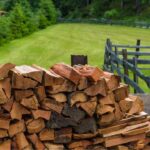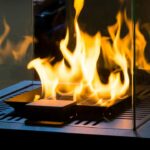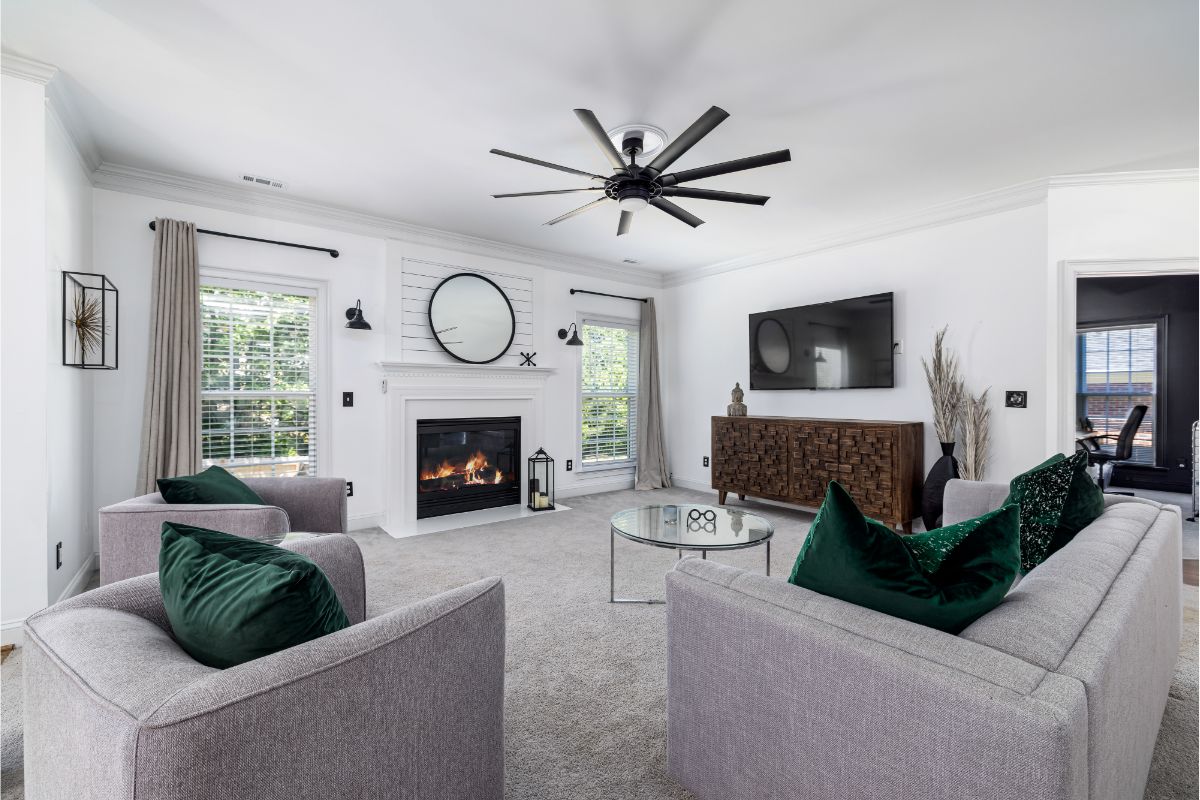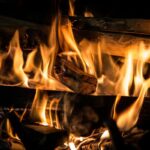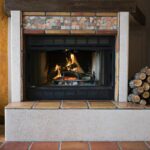Fireplaces are a wonderful way to heat the home. They can be cost-effective, produce large amounts of heat easily, and can also be decorative features that make your home more aesthetically pleasing.
Fireplaces are often a major selling point when it comes to buying and selling your home.

However, fireplaces can also be very dangerous. They can be a major cause of carbon monoxide in the home and this poisonous gas can lead to serious illness and even death if not monitored and prevented.
In this article, we will explain how you can check your fireplace for carbon monoxide. We will also explain what carbon monoxide does and how you can prevent leaks and poisoning from occurring.
What Is Carbon Monoxide?
Carbon monoxide (CO) is a gas that is produced when a variety of fuels, such as coal, natural gas, or wood, are incompletely burned. It is a poisonous gas formed when fuel is burned but doesn’t get enough oxygen in the process.
If there is enough oxygen present, carbon dioxide (CO2) is produced instead of carbon monoxide (CO.) Carbon dioxide is a much safer gas so it is important that CO2 is produced instead of CO.
Why Is Carbon Monoxide So Dangerous?
Carbon monoxide is not only poisonous, but it is very difficult to notice. It’s completely colorless, odorless, and tasteless so it is impossible for humans to notice if carbon monoxide is present.
When inhaled, this poisonous gas works to reduce the amount of oxygen that is in your blood.
Without the right amount of oxygen running through your body, your cells and organs will slowly begin to die. This is carbon monoxide poisoning.
Usually, the first signs of a carbon monoxide leak are when people start showing symptoms of carbon monoxide poisoning.
These can include headaches, dizziness, nausea, vomiting, fatigue, and eventually unconsciousness.
As you can see, many of these symptoms can relate to several other illnesses as well and this is why carbon monoxide is known as the silent killer.
What Are The Signs Of Carbon Monoxide?
As well as the symptoms listed above, there are a few signs that you have a carbon monoxide leak in your home.
Keep your eyes peeled for any of these and if you spot them call in the experts to get your fireplace checked.
- Your pilot light frequently goes out
- Gas appliances produce yellow flames instead of the more regular blue flames
- Smoke begins to build up in your rooms
- Sooty stains build up around your fireplace
All of these signs can be caused by carbon monoxide.
How To Monitor For Carbon Monoxide?
There are several ways that you can monitor for carbon monoxide and check your fireplace. Let’s take a look at these.
Install A Carbon Monoxide Detector
It is very difficult for humans to detect carbon monoxide in the home until it is too late. This is why carbon monoxide detectors are very important and should be installed in your home if you have a fireplace.
There are several different types of carbon monoxide detectors so you can pick the type that works best for your needs.
Some detectors can be simply plugged into electrical outlets whereas others need to be installed on your ceiling or hardwired into your alarm system.
Have Your Fireplace Checked
If you’re concerned that your fireplace is leaking carbon monoxide, you can get it thoroughly checked out by a local chimney and fireplace service company.
They will come to your home and inspect your fireplace to ensure that it is safe and working correctly.
Installing a fireplace can be tricky and there are many things that can go wrong. If your fireplace is old and hasn’t been correctly maintained, this can cause problems as well.
Chimneys can become damaged over time and soot build-up can prevent carbon monoxide from escaping as it should.
An inspection team will be able to confirm whether your fireplace is safe and make recommendations for repairs if necessary.
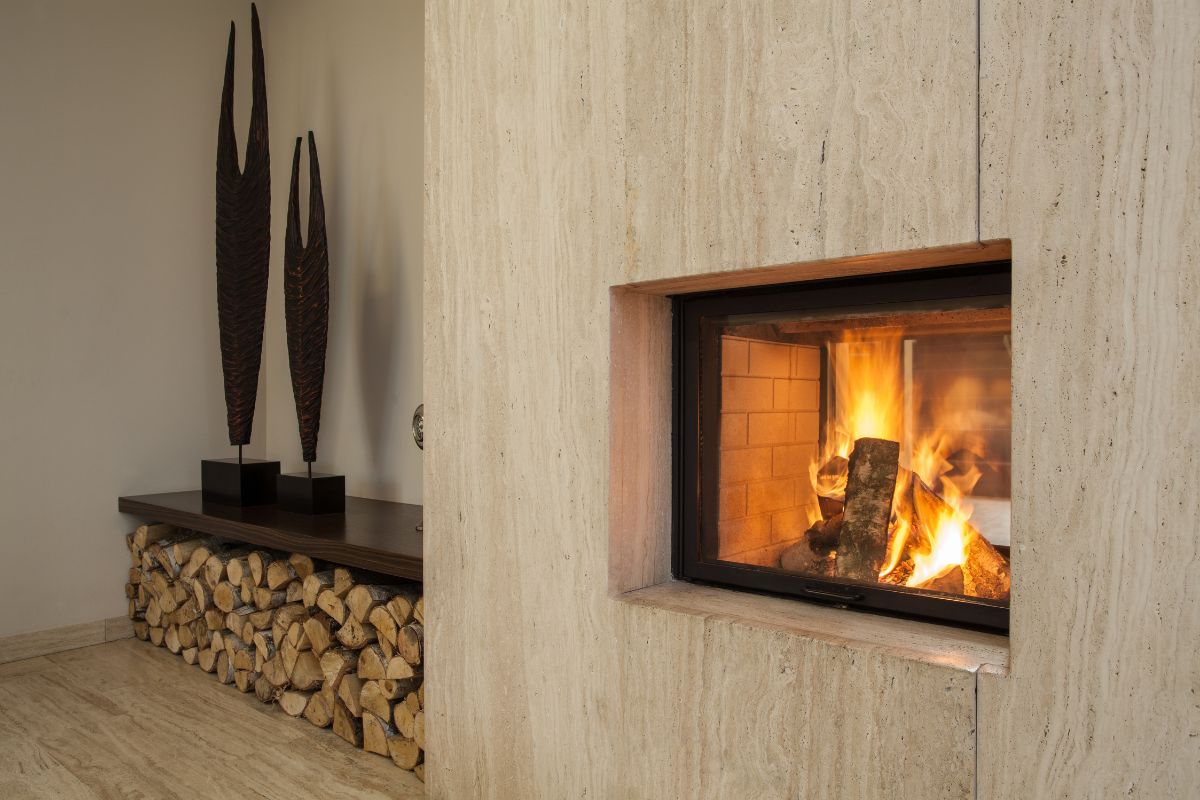
How To Prevent Carbon Monoxide Leaks
We have several tips you should follow to try and prevent carbon monoxide leaks. It’s important that you follow these as they will help to keep you and your family safe.
Ventilation
Adequate ventilation is very important for combating carbon monoxide poisoning. As we explained earlier, carbon monoxide is produced when fuel is burned without enough oxygen present.
With enough ventilation, you can ensure that your fuel gets all of the oxygen it needs.
As well as making sure there is enough ventilation, you should regularly check the ventilation to ensure that it isn’t blocked.
Sweep your chimney regularly to prevent any build-up of soot occurring as this will lead to your chimney becoming blocked and running the risk of carbon monoxide being produced.
Installation And Servicing
If you are having a fireplace installed, make sure that it is being installed by trained and qualified fireplace installers. This will reduce the risks of it being installed incorrectly.
You should also have your fireplace, chimney, and other appliances regularly serviced. This includes your carbon monoxide detectors.
Clean Out Ash And Soot
Too much soot can lead to blockages and this increases the risk of carbon monoxide. Ash can also produce its own amount of CO and although this is small, it is best avoided.
Final Thoughts
In this article, we explained how you can check your fireplace for carbon monoxide.
The most reliable method is to ensure that you have carbon monoxide detectors installed in the home so that any carbon monoxide leaks are quickly identified.
We also listed several steps you can take to prevent carbon monoxide leaks and poisoning from occurring in the first place.
Carbon monoxide is a very dangerous and poisonous gas and you should take every step you can to prevent its production.
- How To Open Chimney Flue - July 20, 2023
- Do Electric Fireplaces Use A Lot Of Electricity? - July 20, 2023
- How To Keep A Fire Going - July 20, 2023

